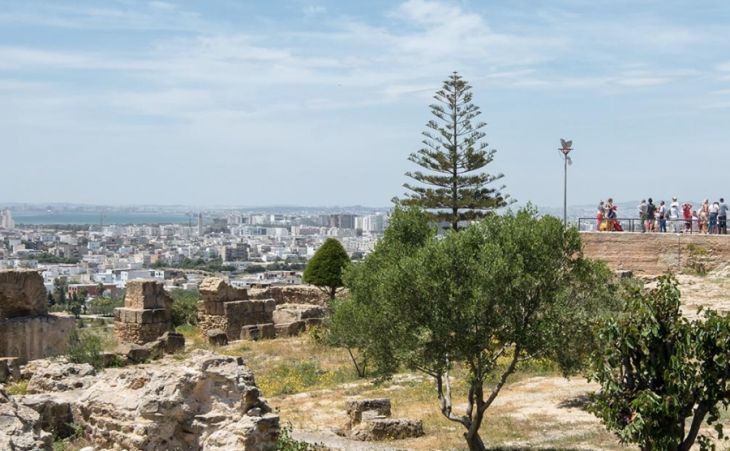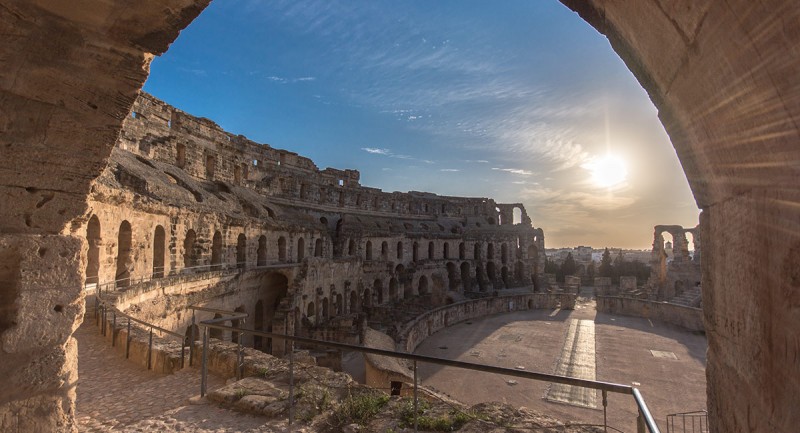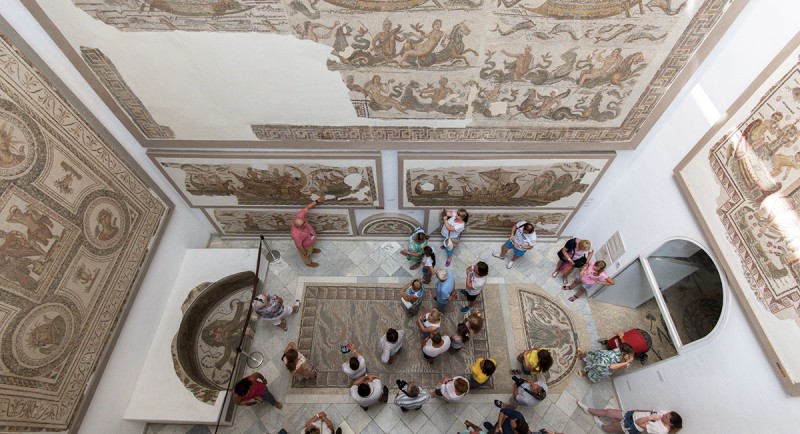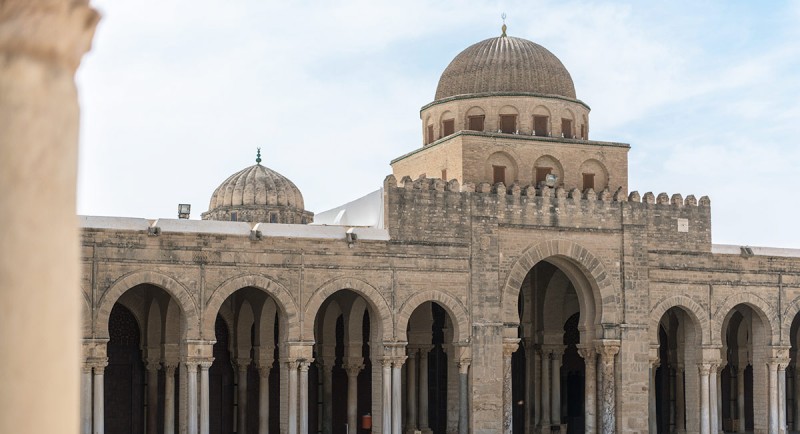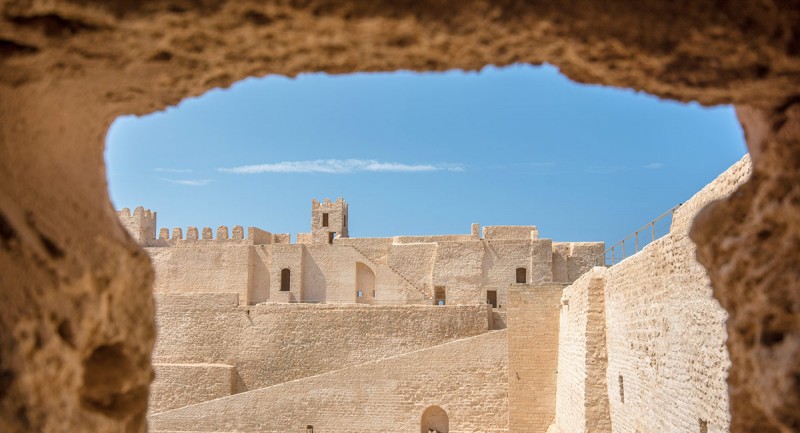From Carthage to Monastir, the top 5 sites, monuments and museums that receive the highest number of visitors.
Number 1: the site of Carthage
Credit where credit’s due: the highest number of visitors was recorded by the site of Carthage. The great ancient metropolis, founded by the Phoenician princess Elyssa-Didon and rebuilt by the Romans, still sparks the imagination.
242,547 combined tickets (for the different parts of the site and the museum) were registered during the year 2018. Carthage is a mandatory stop while visiting the capital
Tunis.
Many groups only visit parts of the site such as the famous Baths of Antoninus or the Byrsa Hill… and forgetting in passing other remains that are just as exciting: the Roman Villas, the sanctuary of Tanit and Baal Hammon (“Tophet”), the impressive Cisterns of La Maalga…
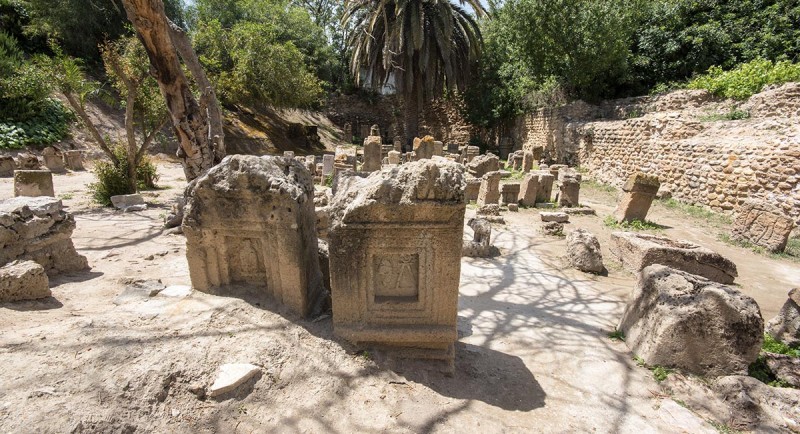
For more information:
On video:
Number 2: the Colosseum of El Jem
In second place is the Colosseum of El Jem. It is one of the most impressive monuments from the Roman empire still preserved.
Almost as large as Rome’s, it welcomed the famous “circus games” that thrilled the crowds throughout the empire.
The Colosseum (or
amphitheatre) of El Jem, next to great seaside resorts such as
Sousse,
Monastir or
Mahdia, received 203,737 visitors in 2018.
A small proportion of them also visited the nearby Archaeological Museum. It features, among other things, beautiful mosaics and a reconstitution of a large Roman African dwelling.
For more information:
Number 3: the National Museum of Bardo
It is one of the most beautiful archaeological museums in the world. Recently modernised and expanded, it covers the whole history of Tunisia, from Carthaginians and Numidians up to Ottomans. Its collection of Roman African mosaics is incredibly rich.
102,112 people visited it in 2018, often as part of a trip to the capital
Tunis.
But the Bardo museum deserves better than a quick visit: it is one of those museums that you cannot visit in one go. Carthaginian statues, medieval manuscripts, Christian or Jewish mosaics from Antiquity, polychromatic tile panels… there is much to be seen again and again!
For more information:
On video:
Number 4: the monuments of Kairouan
The first capital of Muslim Tunisia, located inland 50km from Sousse, is today an important handicraft center (the famous carpets of Kairouan) and a historic city with a unique charm.
Its Great Mosque is one of the oldest in the world, influenced by the ancient architectural tradition.
Kairouan registered 49,365 combined tickets, valid for the Great Mosque and other monuments. Among the most outstanding are the
Aghlabid Basins (9th century), the shrine of
Sidi Abid (14th century) and that of
Sidi Sahbi (17th century)… not always visited by tourists.
A Museum of Islamic art, located a few kilometers away, is of great interest; but it draws only a few hundred visitors a year.
For more information:
On video:
Number 5: the Ribat of Monastir
The
Ribat of
Monastir is one of the most beautiful
fortresses in the country. Its core dates back to the earliest days of Islam. Then it was enlarged several times throughout the centuries.
The building is imposing and its high lookout tower offers an amazing view across the town and the sea. It registered 33,176 tickets in 2018.
Tunisia has many fortresses. Some of them where built by the monarchs of the country, others by Spanish or Turkish occupiers.
Others are just as impressive but less visited, such as the Kasbah in the city of
Kef or the Fort of
Mahdia.
For more information:
What about the others?
Some others deserve to be more frequented such as the beautiful site of
Thuburbo Majus or the Museum of Traditional Heritage of Houmt-Souk (
Djerba).
Not to mention numerous monuments and museums currently closed to the public, like the Zaytuna (Great Mosque), Dar Ben Abdallah (museum of Folk Arts and Traditions) and Tourbet el-Bey (mausoleum of the beylical family) in
Tunis.
Don’t hesitate to visit all these wonderful and little frequented places: the entrance often coasts as few as 5 or 8 dinars (less than 3 euros).
In addition, it is free for Tunisians and residents on the first Sunday of each month, holidays, April 18th (World Day of archaeological sites) and May 18th (World Day of museums). Make the most of it!
Top photo : Carthage, Byrsa Hill
© photos MCM / Imed Dhaouadi
